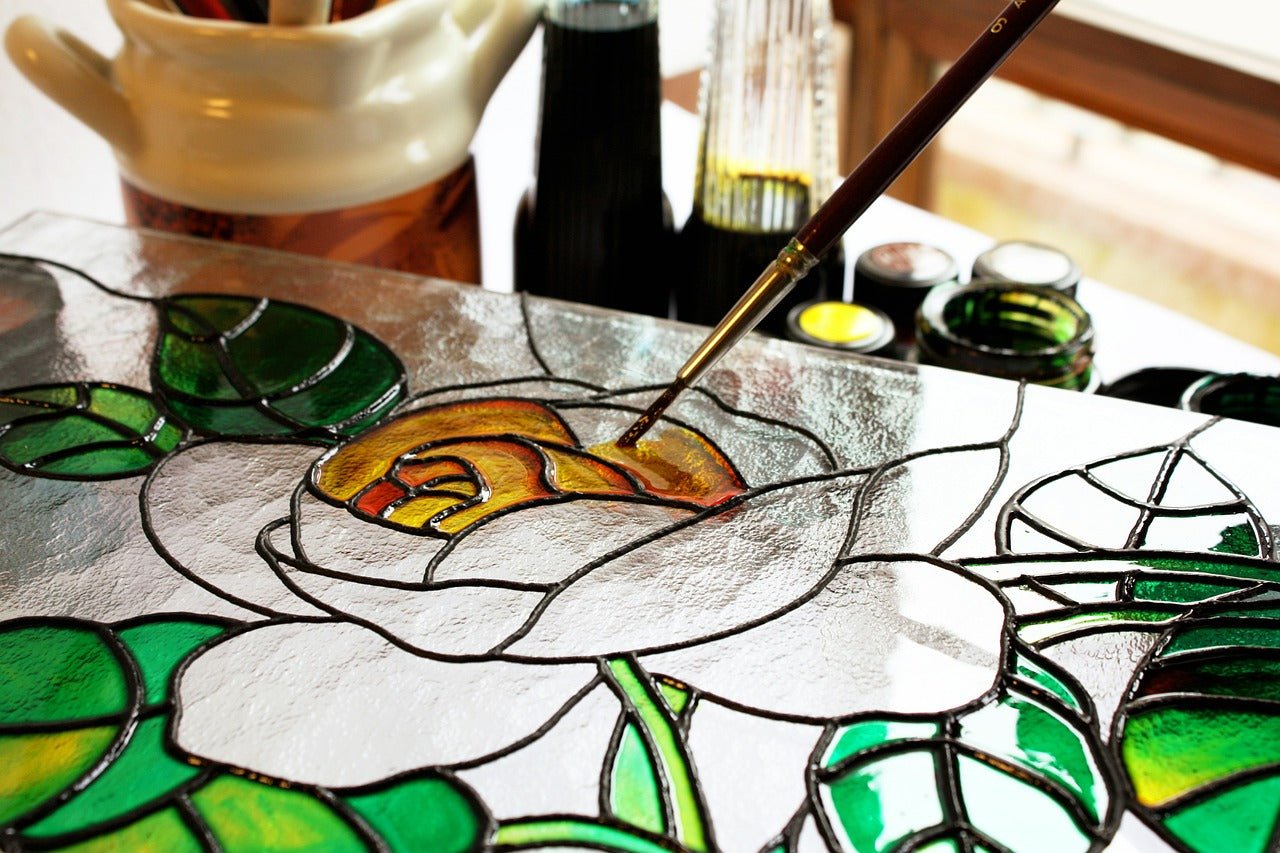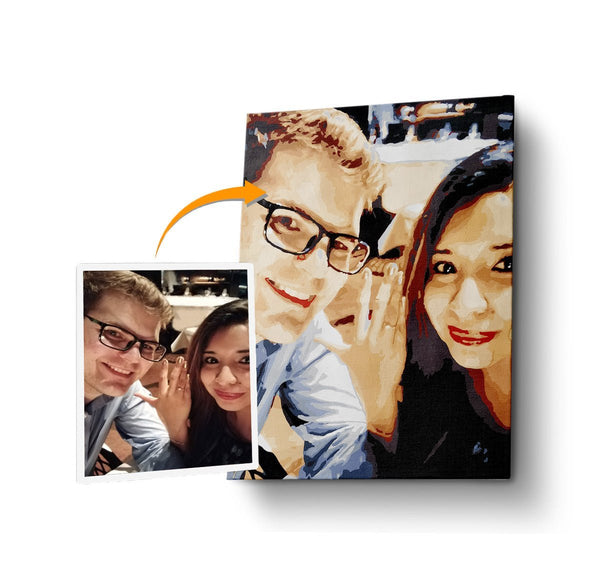
Painter’s Comprehensive Guide on the Uses of Different Brushes
A paintbrush is like a magic wand that guides you through your painting process. Good quality brushes increase your chances of a more aesthetically-pleasing result. Have you entered an art store to buy the paintbrushes you need to start painting and when you go to the brush section, you suddenly feel quite frustrated and overwhelmed with all the brushes that you see? The truth is, you’re not the only one feeling this because every artist has experienced this frustration at some point in their journey. With the wide array of choices, sizes, and brands, it's quite hard for a beginner to pinpoint its exact use and the effect that it gives to your painting. To become a better artist, you need to study the uses of different brushes because knowing their functions will allow you to use them to their fullest potential. In today’s article, let’s talk all about paintbrushes! From the line of brushes that you should have to the uses of different brushes and the parts of a brush, everything that you need to learn about these topics will be squeezed into one article packed full of useful knowledge! Keep on reading to know more!

Painting is a wonderful creative pursuit that adds value to human existence, but it can also be confusing and difficult, especially at the early learning stage. There is plenty to learn about this artistic endeavor, from the painting mediums to the brushwork, elements of art, color theory, blending, and so forth. It is important to remember as an artist that creating art requires patience because it is a continuous learning process in which you never stop learning to improve. Many aspiring artists are intimidated by the thought of beginning to paint because they don't know where to begin in the first place. To begin with, let's learn the uses of different brushes so that you can proceed to the more complex art lectures that you need.
As you paint along the lines of your canvas, you'll get more comfortable with how the brushes hold your medium and what these formidable duos can do for you. Soon, the brushes will become a part of your artistic self to the point that you will eventually know how to instinctively operate.
Why is it Important to Know the Uses of Different Brushes?
If you want to make a truly beautiful painting with a variety of textures and styles to produce an aesthetically-attractive result, learning to leverage the functions of paint brushes will provide you with a firm foundation on how to do it. To obtain solid results, you must, of course, invest in a high-quality basic range of brushes as well as specialist brushes (optional, but if you have the budget, then might as well go for it).

Parts of a Brush
Let’s get to know your paintbrush a little better by learning its anatomy or the four parts of a brush. Accordingly, a paintbrush is made of four main parts which are the following:
-
Handle The long point where you hold the brush which is usually made out of wood or acrylic.
-
Bristles: The hair of the brush that holds the paint. It can either be synthetic or natural, though some brushes are a combination of both.
-
Ferrule: Usually made out of aluminum or metal, this part connects the bristles to the handle.
-
Crimp: It is a small part at the end of the ferrule that connects it to the handle.

A Starter Pack of Brushes: Basic Line of Brushes that You Should Have as an Artist
As a beginner artist, you should have the basic line of paint brushes outlined below (the uses of different brushes will be discussed in the next section). A minimum of ten brushes will be enough to get you started. If you're on a budget, you can buy paintbrush sets instead of buying them individually. You'll save around half the price and it'll be handier for you as you don't have to pick around and select which ones you need and which brushes you don't need at the early stage of learning.
Thus, having a minimum of ten different basic brushes can make the painting process go easier on your end. That way, you don't have to continually wipe the brush before moving on to the next color. Instead, you can use a different one every time you need to switch colors (to save you time from cleaning the brush). Furthermore, it will also help you maintain your brushes better as it can protect your brushes from being ruined easily.
Here are the nine different brushes that you should have as a beginner:
- Angled brush
- Round brush
- Filbert brush
- Detail brush
- Flat brush
- Bright brush
- Pointed round brush
- Fan brush
- Wash brush

Uses of Different Brushes
1. Angled brush:
This brush has flat hairs with angled edges at the end. It is mostly used for curving strokes and filling up the corners. With its tip, it can also reach tiny spaces. It is also used to cover large areas in your working surface which is similar to flat brushes, only that it is more flexible due to its slanted bristle design.
2. Round brush:
This brush is great for drawing, outlining, detailing, controlled washes, and filling in small areas. These brushes provide you with complete control over various elements in your painting. They are also useful for adding details and when you require complete control over the amount and flow of the paint. You might also want to try using a round brush for wet and dry techniques.
3. Filbert brush:
This type of brush resembles a flat brush with medium to long hairs that finish in a rounded tip or an oval form. When used on its side, it produces a wonderful delicate line and when used flat, it produces large brushstrokes that provide a good paint coverage to your painting area. It is a combination of round and flat brushes that has the right balance: it can add details to your work as a round brush while covering more surfaces just like a flat brush.
4. Detail brush:
This type of brush is useful for drawing precise lines and making small strokes. Detail brushes may be used to paint miniature canvases, sculptures, models, figurines, or any other painting project that requires accuracy and very precise details.
5. Flat brush:
Flat brushes are ideal for broad strokes that require a lot of paint application. It's great for making bold and powerful strokes, washes, filling in large areas, and producing an impasto texture. It may also be used to make thin lines, straight edges, and stripe patterns. Long-haired flat brushes are thus suitable for varnishing after your paint is completely dried.
6. Bright brush:
This brush is best for making small, controlled strokes. It is preferable to work up close to the painting surface rather than holding the brush at a distance when using this type of brush.
7. Pointed round brush:
A combination between a round brush and a detailed brush, this type of brush features round bristles with a pointed tip, making them suitable for fine detail work. They are excellent for outlining, covering small areas, and watercolor washes.
8. Fan brush:
As the name suggests, fan brushes feature a fan-shaped bristle. This type of brush is excellent for blending beautiful backdrops and sky, as well as for adding subtle tones and highlights to darker regions. A fan brush may also be used to experiment with a variety of textures and effects.
9. Wash brush:
The largest of the bunch is an acrylic wash brush, which has a square end and medium to long bristles. Since the brush is thicker compared to other brushes, it is also great for varnishing because it provides maximum coverage smoothly and swiftly. It also produces powerful strokes that are great when creating fine lines, straight edges, and striped effects.






